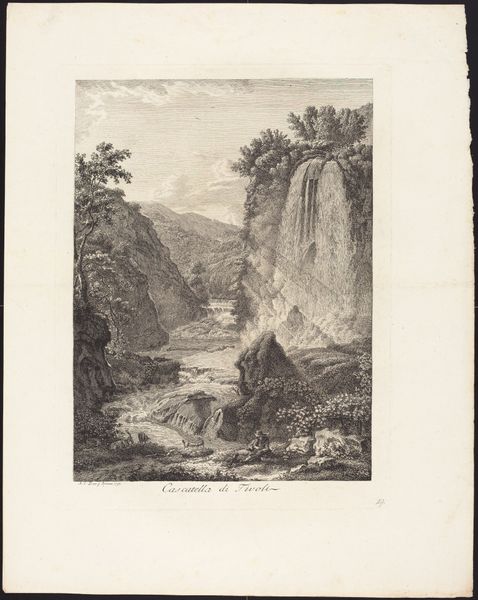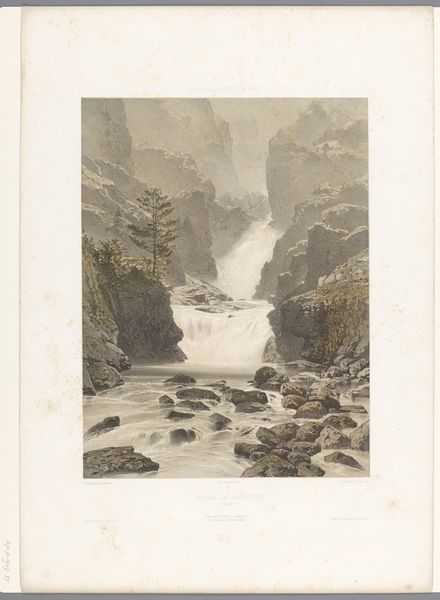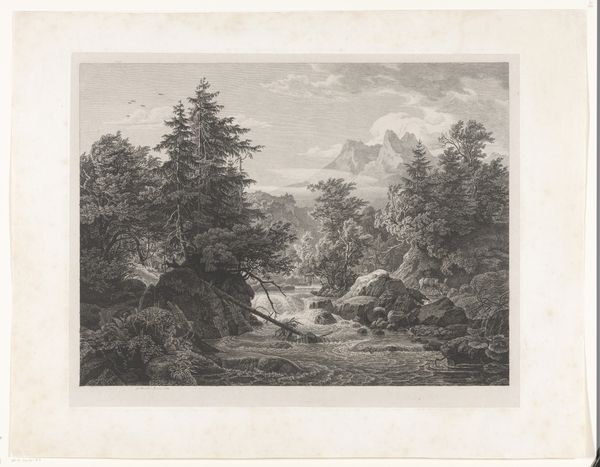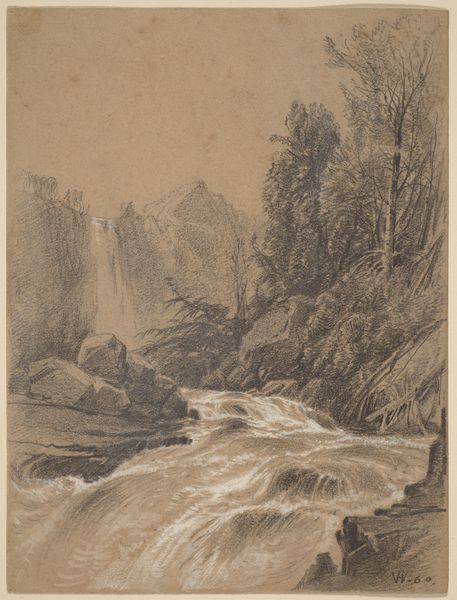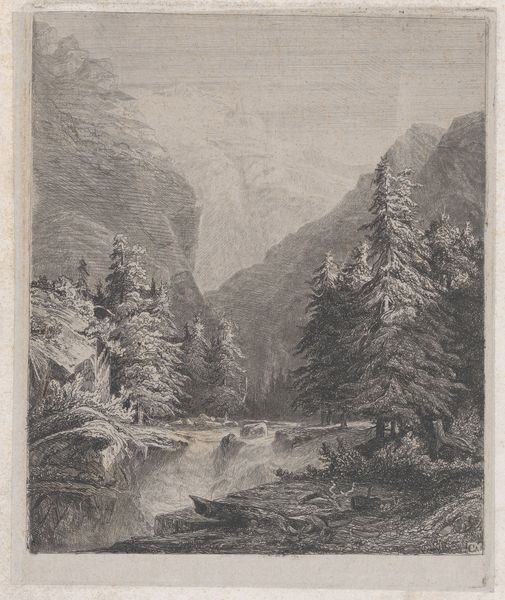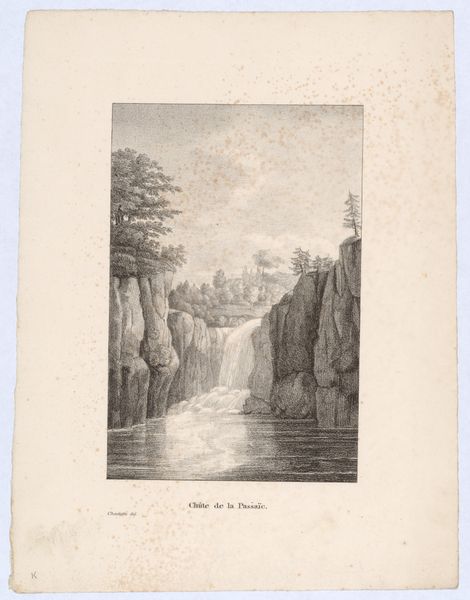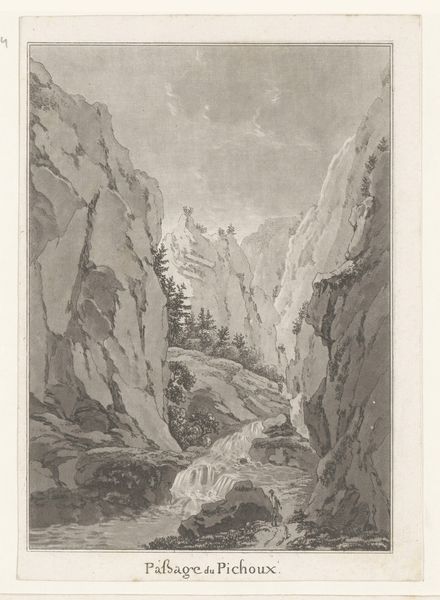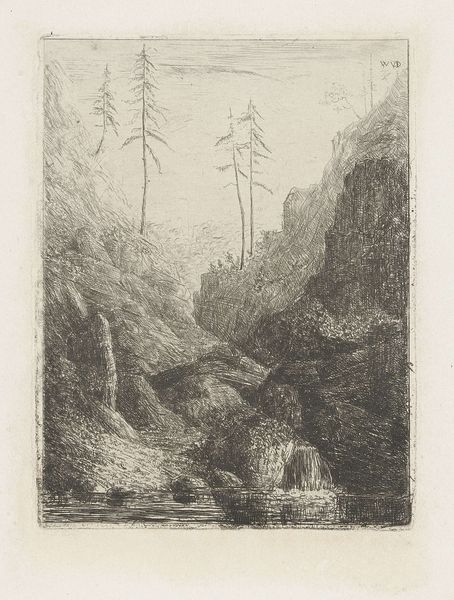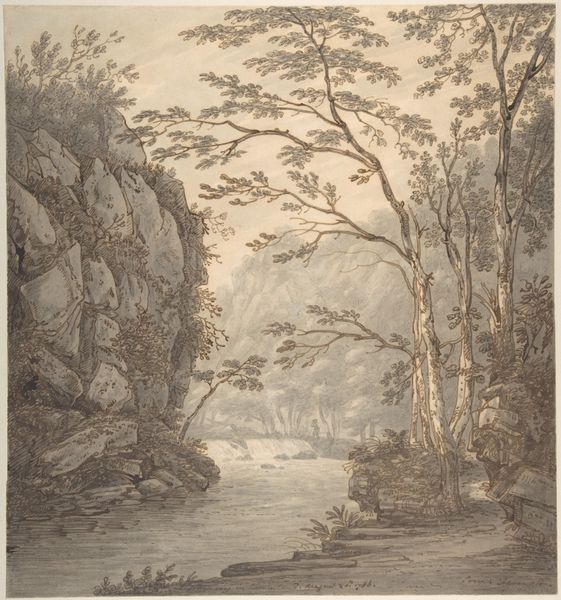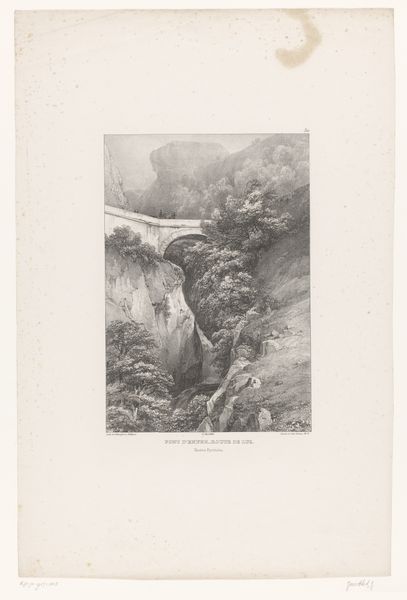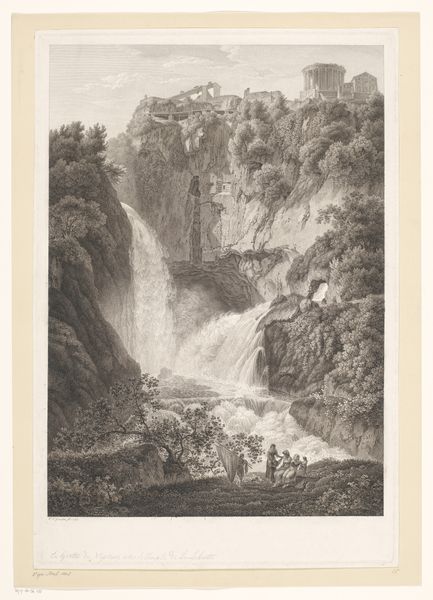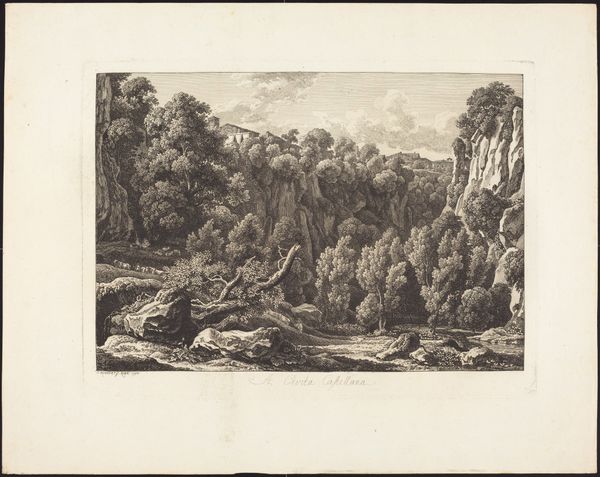
Dimensions: height 566 mm, width 402 mm
Copyright: Rijks Museum: Open Domain
Curator: Here we have Eugène Cicéri’s “View of the Reichenbach Falls,” dating back to 1859. It resides here at the Rijksmuseum. What strikes you when you first gaze upon this cascade immortalized in pencil and colored pencil? Editor: Raw power, almost theatrical. I feel like I'm backstage, about to be splashed by this torrential downpour. A brooding set design meets sublime beauty. Curator: That's an interesting interpretation. The Romantics definitely grappled with the sublime – the terrifying and awe-inspiring power of nature. It was often employed to evoke powerful emotions and connect viewers with something bigger than themselves, and I think Cicéri captured that feeling very effectively, though not in the exaggerated manner we sometimes see in that era. Editor: Absolutely. It avoids outright drama by staying grounded, somehow. I appreciate that it uses these muted tones—the grayness almost feels photographic, documentary—yet there's still a heightened sensitivity in capturing the water's motion and the rocky textures. Like it's inviting you in with a quiet urgency. Curator: Cicéri’s work here sits firmly within the traditions of landscape art, which gained popularity as industrialized societies turned to nature for contemplation and, quite literally, fresh air. Landscapes started becoming a matter of national identity, tourism, and documentation as well. Editor: Which all gives this piece another layer. It isn't just a scene, it's loaded with ideas about society, perception, even progress... Makes you wonder, did Cicéri hike there himself? What did that journey feel like back then? Curator: Knowing Cicéri's history, it’s quite possible. This piece echoes a larger conversation—one about humankind's place in the natural order and the meaning we assign to untouched landscapes, concepts which remain fiercely relevant. Editor: So true! It reminds me that our ongoing need to capture these wild spaces speaks volumes, even now. The water will still be falling in another hundred years, so, in some ways, the artwork ensures the moment won't pass unnoticed. Curator: Yes, something about bearing witness. I appreciate how you connect its past relevance with contemporary sentiments; it is important to consider these historical snapshots with a current perspective. Editor: Right? Thank you, this little pilgrimage through a page was lovely.
Comments
No comments
Be the first to comment and join the conversation on the ultimate creative platform.

